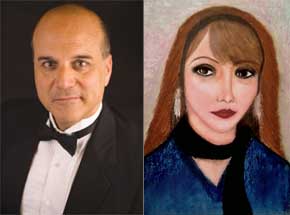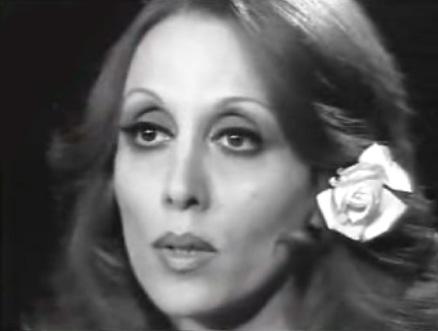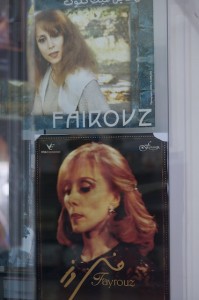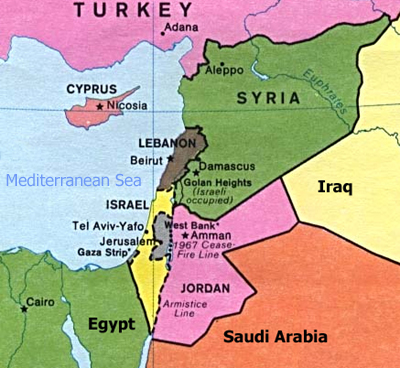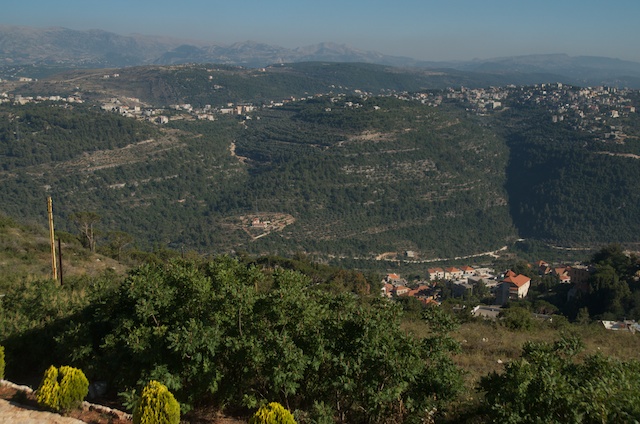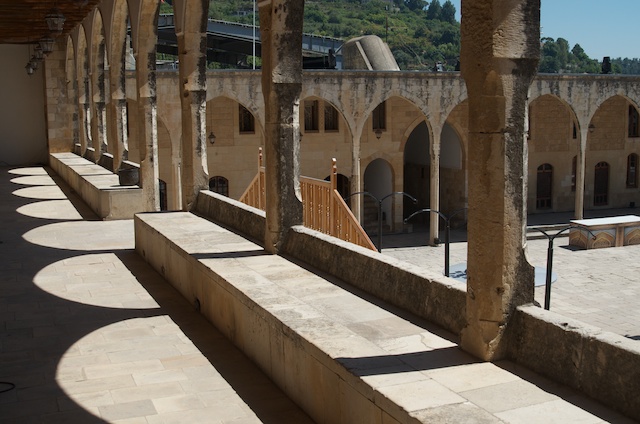"Hip Deep Lebanon" will premier next week, so we decided to release this interview with Kenneth Habib as a teaser for its release.
Kenneth Habib is an Associate Professor in Ethnomusicology, Music Theory, and Music History at the California Polytechnic State University in San Luis Obispo. He wrote his PhD dissertation on Fairuz, the preeminent singer of Lebanon, and the Rahbani family of composer poets whose careers have been so closely tied with hers. Banning Eyre spoke with Ken for Afropop Worldwide’s Hip Deep program, “Lebanon 1: Fairuz, A Woman for All Seasons.” It turned out that Ken is so good at discussing this topic that Banning had scarcely to ask questions. So we present this as, essentially, a spoken essay. Note that many sources spell the singer’s name “Fairouz,” and in other ways as well. Here, we use Ken Habib’s preferred spelling.
Introduction
My name is Ken Habib. I first saw Fairuz perform live in her famous 1981 concert tour of the United States. It was at the Shrine Auditorium in Los Angeles, and I’d say that that really awoke in me something that I knew was there lifelong in terms of my interest in my heritage and, in particular, my Lebanese cultural background. All four of my grandparents are from Lebanon, and so I fit into the legacy of migrants from what was called Greater Syria at that time.
I couldn’t tell you the first time I heard a Fairuz song; it was doubtless as a child, going to any number of weddings and dancing a dabke as a kid. That was the favorite part of a wedding, definitely—the celebration afterward with food and dancing and what have you. So, that’s how I first became introduced to the music of Fairuz. Then, living abroad with a writing career in Saudi Arabia for a couple of years in my mid-twenties, I began buying Fairuz albums in earnest. But it was only after I returned to school to go into music on a full-time basis—I had been playing music since I was about ten—and studying classical voice and composition, getting my master’s degree in composition, and then going into ethnomusicology for my PhD—that I decided to focus on the Middle East and American popular music, which were my two main interests. And when I did that, I came in knowing that I really wanted to focus on Lebanon and, in particular, Fairuz.
I’ll provide some quick facts about Fairuz herself before we get into what we might call the larger Fairuz phenomenon. Her born name is Nuhad Haddad. She was born in 1935 in the vicinity of the Lebanese capital, Beirut, to a Syriac Catholic father and a Maronite Catholic mother. And I say that, in part, because of the religious complexity of Lebanon with its wide-ranging religious make-up and backgrounds that to some degree characterize the country. And so, Fairuz, along with the Egyptian singer Umm Kulthum, is the most famous and accomplished of modern Arab singers. Her singing is still regarded as of the highest standard, and among her well-known monikers is “Our Ambassador to the Stars.” Umm Kulthum had her celestial moniker too, “The Star of the East.”
Fairuz’s work has been nearly exclusively with the Rahbani family of composer poets, and so let me also provide some quick facts on these composers. They’re a family, the Rahbani family, and they hail from Antilyas, which is north of Beirut, and have an Orthodox Christian background, and the first two of them, you might say the primary two, the ones who, together with Fairuz, really launched the whole phenomenon, are two brothers: Assi and Mansour. Assi Rahbani was born in 1923 and died in 1986, and Mansour was born in 1925 and died in 2009, and the two of them were brilliant composer poets and artists in very large senses of the words. And they went on with Fairuz, as a team, to dramatically impact music and composition and style in modern Eastern Arab art and popular music. To these two composers we can add Elias Rahbani, the younger brother born in 1938, who worked with them on occasion. And then, finally, Ziad Rahbani who was born in 1956, who is the son of Assi and Fairuz—as we’ll see, they married—and who remains her current composer. Each of these brothers have sons as well who became famous composers and composer poets, but these four are the ones who have really worked with Fairuz, and the Rahbani brothers, these two brothers in particular, Assi and Mansour, are the two with Fairuz who really launched this phenomenon.
So, Fairuz, as a phenomenon, came up at the same time in a sense that the modern state of Lebanon came up, and this trio of Fairuz, Assi , and Mansour, they really resonated with Lebanese and with Arabs across Arab society.
Lebanon’s History
So, a quick look at Lebanon, I think, would help. It’s a small country with a giant history. I’m on the Central Coast here in California, and Lebanon is about the size of San Luis Obispo County, not much larger. It’s very small, about 4,000 square miles. And the history is long and multifaceted and rich, and the beauty is legendary. The beauty is written about in the Jewish scriptures or Old Testament Christian scriptures. The mountains are fabled and are called “The Lebanon.” That’s where the modern country gets its name. And these mountains meet this fantastic Mediterranean coastline, and there are perennially snow-capped mountains within eyeshot of the beach. And so a classic saying is that you can be sitting on the beach reading a book in the sun in a bathing suit and look up and see the snow capped mountains. It’s really fantastic.
The population of Lebanon is small. There are only about four million people there. At present, the religious makeup, generally speaking, is about 60% Muslims and 40% Christians. Historically, there also was a sizable population of Jews and a Christian majority. Throughout history, colonial empires have been attracted to the desirable location. It’s a very strategic location at the eastern edge of the Mediterranean Sea, and to this day, there is a striking legacy of Roman and Phoenician ruins that, if you were a child, you might grow up playing in; they’re just part of the neighborhood.
And so there’s been an enduring impact on the region, on Lebanon, on society, and on Fairuz and the Rahbani composers from the various reigns of power over the millennia. The Byzantine Empire lost control of what is now Lebanon to the quickly expanding Islamic Empire in the 7th century. That set the stage for the multifaceted religious demographic that’s continued to the present. The changing rules included the invasion of the Crusaders in the 12th century, the Mamluks in the 13th century, and the Ottomans in the 16th century. And then, the varying shifting allegiances between occupiers and occupied sometimes included marginalized religious groups in Lebanon, for example, the Maronites, the Shiites, and the Druze. And they were able to find refuge in these mountains that were so rugged that invaders found them very difficult to penetrate them. If you were to see pictures, they’re these wonderfully rugged and beautiful mountains, and so, they were a safe haven as it were—not for the faint of heart. And so their ability to protect themselves in this way also helped to contribute to the ongoing diverse sectarian makeup of what is now Lebanon.








